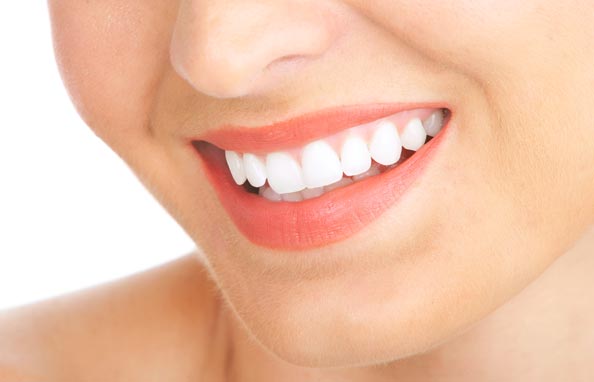|
Do you detest the toxic chemicals of the commercial cleaners on the market? Have you switched to green cleaning products? Or perhaps you're thinking about making the switch, but you're confused and don't know where to start. Green cleaning DIY to the rescue! It's not complicated either. All you need are a few basic ingredients for all your household cleaning to transform your cleaning supplies. The basic supplies you need are:
• Baking Soda • White Vinegar • Hydrogen Peroxide • Essential oils, like tea tree oil, lavender oil, eucalyptus oil, or lemongrass oil • Castile Soap (like Dr. Bronner's) • Fresh Herbs, citrus, or citrus peels • Vegetable Oil • Salt These are inexpensive, easy-to-use, and environmentally safe alternatives, which can safely be used in place of commercial household products. They can be used alone or in combination for a wealth of household applications. Here's what you can do with these products. Baking Soda - cleans, deodorizes, softens water, scours. White Vinegar - cuts grease, removes mildew, odors, some stains and wax build-up. Hydrogen Peroxide - removes laundry stains, whitens clothes, cleans fruits and veggies, sanitizes, de-germs. Essential Oils - effective against most household bacteria. Soap - unscented soap in liquid form, flakes, powders or bars is biodegradable and will clean just about anything. Avoid using soaps which contain petroleum distillates. Fresh Herbs, Citrus, or Citrus Peels - cleans, deodorizes, effective against bacteria. Vegetable Oil - polishes wood Salt - abrasive All-Purpose Cleaner: Mix 1/2 cup vinegar and 1/4 cup baking soda (or 2 teaspoons borax) into 1/2 gallon (2 liters) water. Store and keep. Use for removal of water deposit stains on shower stall panels, bathroom chrome fixtures, windows, bathroom mirrors, etc. All-Purpose Cleaner: Mix 2 cups water, 1 cup hydrogen peroxide, and 1/4 cup lemon juice. Store and keep. You can use this cleaner for everything from streak-free mirrors to wiping out the cat litter box. You'll find a list of simple green cleaning recipes at Earth Easy. What's are your favorite natural cleaning alternatives?
15 Comments
A couple days ago while trimming trees and bushes encroaching on the driveway, I inadvertently brushed against some poison oak. Oddly enough, I'm not reactive to poison ivy, but poison oak is a different story. If I had known the poison oak had touched my skin, I would have immediately washed the area, an effective deterrent within 15 minutes of contact. I wasn't so lucky this time, but fortunately there were only a couple spots. Initially, I ignored them, but, of course, they itched, so I finally pulled out my simple DIY calamine lotion recipe. It worked like a charm! Instant relief and the spots healed overnight. Silly me for waiting so long! I snapped a quick shot of what the mixture looks like - no fancy photo here, but you'll get the idea of the proper consistency.  Now, here's the formula: 1 part sea salt 1 part baking soda 1 part bentonite clay 1 1/2% essential oils (use one or a combination of lavender, geranium, chamomile, yarrow, peppermint, and/or tea tree) enough distilled water to make a paste Be sure to add the water a few drops at a time or you may make it too thin and will have to increase the dry ingredients and essential oils to get the right consistency. If you only need a tiny bit, for each part, use 1/2 teaspoon each for the dry ingredients and about 5 drops of essential oil. Be sure to use up your calamine lotion within 10 days and keep it refrigerated. Best advice . . . leaves of 3, leave them be . . . but if you do get a rash, give this recipe a try. You'll be glad you did! Do you have a favorite calamine lotion recipe? If so, please share! You never know what kind of pesticides, insects or dirt may be lurking on the surface of your favorite fruits and vegetables. That's why it's always a good idea to thoroughly wash all your produce before eating it. Although washing with plain water can accomplish a lot, adding some natural sources of acid (namely lemon and vinegar) to the wash can provide a bit of additional, natural disinfecting power. Follow these easy steps to find out how to make a fruit and vegetable wash that is both inexpensive and completely organic. You may choose from an selection of kitchen ingredients to make your homemade fruit and vegetable wash, including purified water, vinegar (white or apple cider vinegar), baking soda, lemon, salt, and essential oils. You can simply fill your sink with water, add a cup of vinegar and a couple tablespoons of salt. Place the fruit and/or veggies in a colander and place in the water mixture. Allow to soak for a few minutes. Another option is to create a spray with: 2 cups purified water 1 cup vinegar (white or apple cider vinegar) 1 Tbsp baking soda juice of 1 lemon 10 drops lemon or orange essential oil (optional) Put all ingredients into a spray bottle (be careful as it will foam up) shake gently to mix, then spray on produce. Allow to sit for about 2 to 5 minutes. If it's a fruit or veggie that can be gently scrubbed, use a scrub brush specified for produce washing only. Rinse thoroughly and enjoy your freshly washed and cleaned produce! Be sure to store your wash in the refrigerator for up to 3 weeks before having to make another batch. You can always cut recipe in half to make a smaller batch. Research suggests to use the spray for hard-skinned fruits and vegetables and soaking for soft-skinned produce. These are not hard and fast recipes, so feel free to experiment with the ingredients to find the perfect formula for you! Why This Works The acetic acid in vinegar cleans, kills bacteria and helps to dissolve the wax and pesticide residues. The salt draws out any little bugs, dirt, other small unwanted things and will remove some of the wax. Why pay for the expensive wash at the store when you can make your own? Check out the EWG's 2012 list of Dirty Dozen and Clean Fifteen to help know the produce that you need to buy organically and the produce that is safe to buy conventionally, but that needs to be washed thoroughly.
Click here for a free printable of the guidelines that's great to take shopping. Do you believe it's important to wash your produce? What do you use to wash your fruits and veggies? Who doesn't want white teeth? Unfortunately most of us have been taken in by the need to use commercial toothpaste which may contain chemical fillers and ingredients such as glycerin and fluoride. Did you know that fluoride is a toxic waste by-product of the phosphate fertilizer industry or the aluminum or steel industry? We are beginning to understand the harmful effects of fluoride on our bodies. Glycerin coats the enamel on your teeth and prevents re-mineralization from saliva.
We can prevent and even heal cavities by the food we eat. It's best to eliminate processed foods and eat more free range eggs, raw milk and butter, fish and good vegetables. With a good diet and using tooth powder, you will greatly improve and strengthen your teeth. Try this simple tooth powder recipe: 4 Tablespoons aluminum-free baking soda 2 teaspoons fine sea salt Baking Soda helps whiten teeth. In saliva, baking soda buffers & neutralizes plaque acids, helps clean your teeth and counteract acidity in the mouth. It's slightly abrasive consistency works as a cleanser of teeth and gums, so brushing your teeth with baking soda, with its high pH and disinfectant and antiseptic properties, will reduce harmful oral microbial flora by killing off acid-loving bacteria. Sea salt whitens your teeth and is good for firming the gums and keeping them healthy. Add essential oil: clove helps heal gums; tea tree is a great all around antiseptic; peppermint is antibacterial, anti-inflammatory, antifungal, antimicrobial, antiseptic, and astringent; spearmint is antibacterial, anti-inflammatory, antiseptic, and astringent; clary sage helps tighten and whiten teeth and they have astringent/antibacterial properties. Optional: montmorillonite ore bentonite clay is great for polishing teeth and clearing up stains. Optional: stevia powder for sweetness Optional: myrrh gum powder for its excellent antiseptic properties and overall oral health capabilities There are many other options, but this will get you started if you haven't made your own tooth powder before. Do you have a favorite tooth powder recipe? If so, do share with us! |
Contact UsAuthorWelcome! I'm Stephanie (Jo to close friends), founder of EdenSong. Aside from my university studies, I have a natural passion for all things organic. I enjoy living and learning about natural ways, all things health related, cooking, gardening with herbs and flowers, photography, DIYing, yoga, bicycling, ballet, traveling and being with family and friends. A quirk of mine is my near obsession of Asian culture, particularly Korean history and its language. Would you like to know more? Find out about us. Categories
All
Archives
December 2014
© EdenSong Essentials
All Rights Reserved |
|
Sign up for monthly free tips and recipes.
|
Shop About Us Contact Us Ingredients Endorsements Terms & Policies Get in Touch Customer service or wholesale inquiries, please leave us a message: 615.292.1000 Or better yet, email us: [email protected] |
Connect Socially
© EdenSong Essentials
All Rights Reserved |









